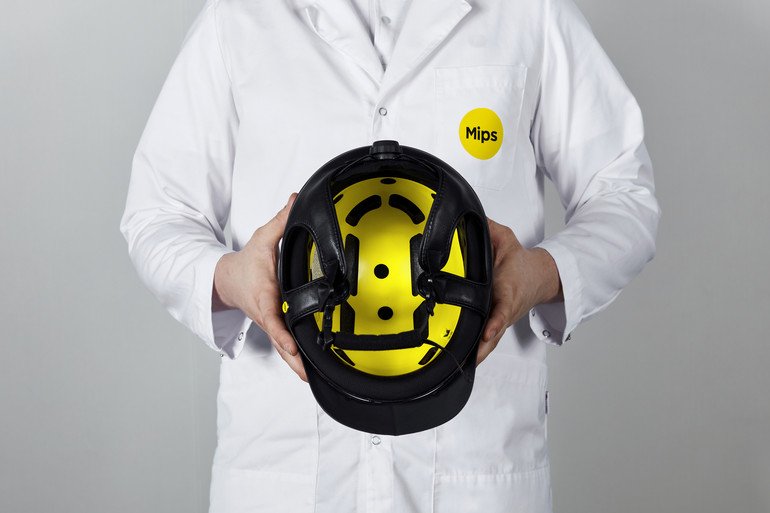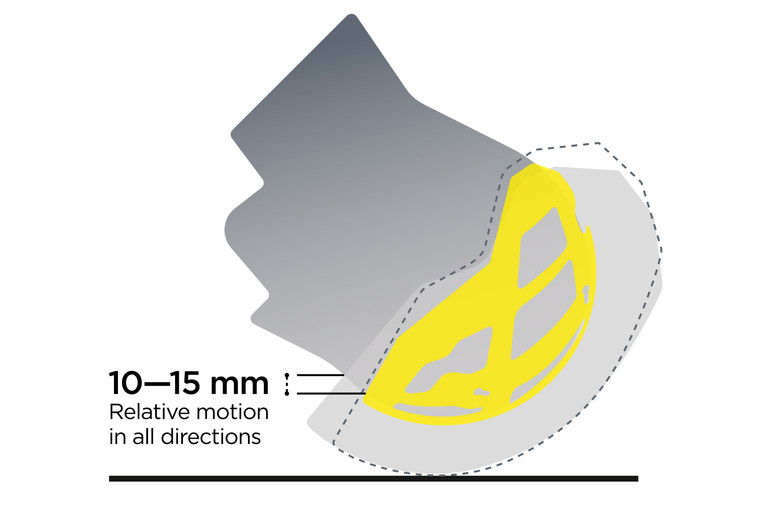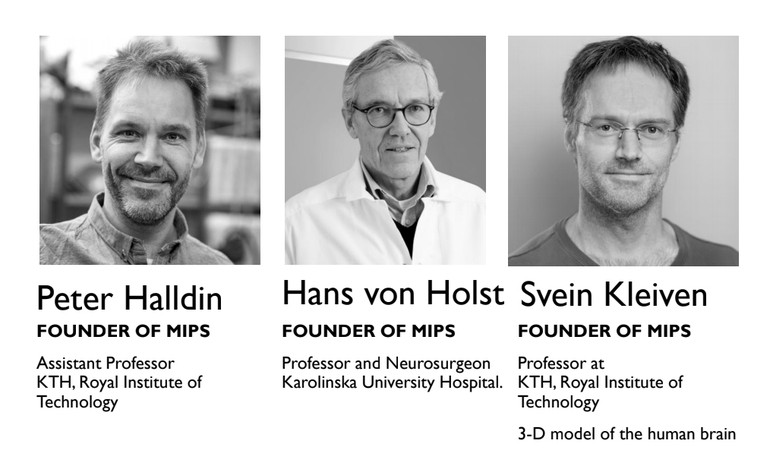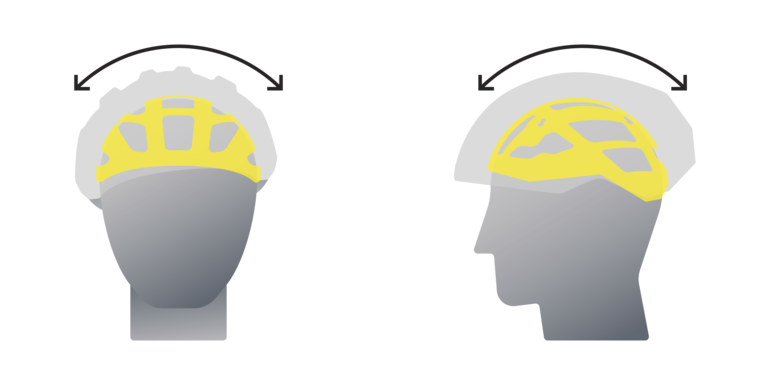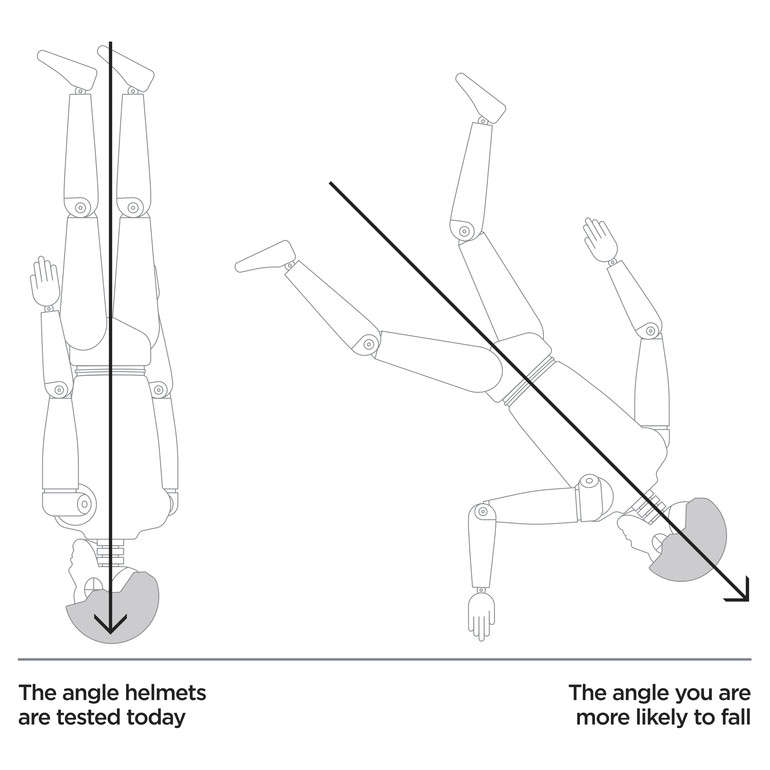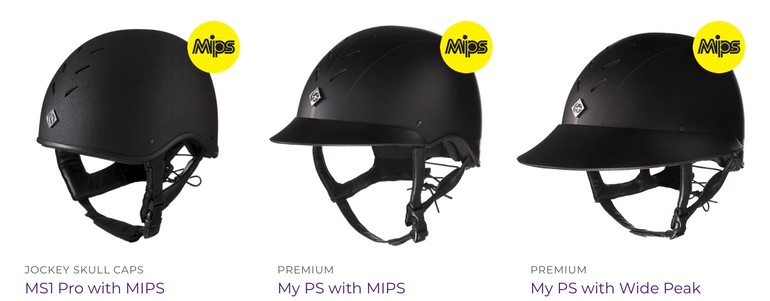Text © World of Showjumping
MIPS is a common system in helmets made for biking, motor cross, skiing and other sports where accidents can happen from a speed. However, in helmets made for riding the MIPS system is still quite rare. So what is MIPS and what is the purpose of the system? MIPS – or MIPS Brain Protection System – is there to give an even better protection and to reduce the rotation of the brain in case of a fall. If you fall off your horse at speed and land on your head, the brain will probably sustain a rotational motion. This rotational movement of the brain is the most common reason for concussions – or even worse, brain damages – since the rotation can cause strain to the brain tissue.
The MIPS system, which is activated in case of a fall, will allow the head to move inside the helmet and thus reduce the dangerous rotation of the brain. You might think that your helmet can move a bit on your head when you wear it, and that MIPS isn’t really necessary – however, depending on the speed and height when you fall, you can have up to ten times your bodyweight pressure on the helmet, which will make it difficult for your head to move in the helmet. This is when MIPS would be activated – allowing the head to move 10-15 mm in all directions in the helmet, even with the heavy pressure. 10-15 mm might not seem like much, but it can make a huge difference on the outcome of the fall.
“When you have a fall, the first contact your helmet has with the surface is just 5-20 milliseconds depending on the ground material. With the MIPS system we are trying to imitate a fall on ice – where the helmet and head would be able to slide on the surface, contrary to when you fall from a horse on a grass or sand surface and the helmet gets stuck in the ground and forces the head to rotate. With the MIPS system, the head can continue to slide in the helmet and it will be a faster movement straight forward which our heads and brains can deal much better with than a rotation,” Peter Halldin – one of the founder of MIPS – explains.
It is 25 years of research behind the MIPS system and four doctoral dissertations about the technology. A mathematical computer model is used in the laboratory where all the helmets are tested – both before and after the MIPS system is implemented. During the different test methods, the computer model can tell exactly what happens with the head and brain.
“The research is on-going and we have several researchers working on this on a daily basis,” Halldin says.
It all started when the Swedish professor and neurosurgeon at the Karolinska University Hospital Hans von Holst contacted the KTH Royal Institute of Technology to get help to reduce the number on brain injuries due to traffic or riding accidents. A large amount of the brain injuries seen at hospitals relate to these kind of accidents, and still do.
Together with Peter Halldin, assistant professor at KTH, Royal Institute of Technology and Sven Kleiven, professor at KTH, Royal Institute of Technology, Hans von Holst went on to found MIPS.
MIPS can be implemented in all kinds of helmets. Today it is used by more than 100 different brands and is implemented in more than 580 different models. MIPS is also implemented in a few riding helmets, but far from as many as you would expect. Equestrian brands working with the MIPS system are Armis, Back on Track, Champion, Charles Owen, Hööks, One K Helmets, Tipperary and Trauma Void.
Are there any similar systems on the market, we ask? “Yes and no. There is no one that has the same business model as us, but there are some helmet brands that have constructed their own technologies. I haven’t seen anyone that comes up to 10-15mm relative movement, that redirects the power and that gives a full coverage though. There are some creative solutions, but no one that we have seen that can actually get close to our function.”
Today, the testing of helmets is mostly done to a flat surface as if you would land straight on top of your head. MIPS tests the helmets when landing on an angle to see what happens to the head if you hit it on the side, back or the front – which is probably more likely than to fall straight to the top of your head.
“I have myself never seen anyone falling straight down to the ground, so you will in the majority of the accidents have a rotation component to the falls,” Halldin says. “Then you can fall and hit your head in thousands of different angels and ways, so there should be a big need to have the MIPS system in equestrian helmets. However, what we always say – the most important thing is that you wear a helmet, then after that you can start to think about getting the best possible one.”
WoSJ had a talk with Alex Burek from Charles Owen to learn more about why they have the MIPS system in some of their helmets.
“Charles Owen turns 110 years old next year and we have always done a lot of research and strived to be innovative to make our helmets as safe as possible,” Burek says. “We also invest in brain injury research and the previous owner of the company – Roy Burek, who was my father-in-law and unfortunately died in the spring of 2019 – was an honourable professor at Cardiff University. During his research on rotational falls, he discovered the MIPS technology.
We started to work with MIPS about five years ago and now we have it in three different models – the MS1 Pro, the My PS and the My PS with Wide Peak. Recently, eventing rider Harry Meade had a very serious fall during cross-country, which he survived. We did an accident investigation of the helmet and could see that the movement was taken by the MIPS system – instead of causing a rotation to his brain – which may have saved his life.
All of our helmets are obviously very safe and we wouldn’t sell them if they weren’t – we have different kind of helmets designed for different kind of riding so to say. And we recognized that we also needed helmets with an additional protection for rotational falls."
"It takes us two years to develop a new model and we are definitely planning on integrate MIPS in future designs.
There sadly isn’t enough awareness in the equestrian sports, about this technology. Unfortunately it often takes a bad accident to make riders aware of why different technologies are important. MIPS is one very important technology, but there is for example also the PAS015 standard, which meant Laura Kraut’s helmet protected her when she had a fall. The horse stepped on her head twice and the helmet stopped the studs of the horse. If this helmet did not have the PAS015 standard, the stud might have gone straight through the helmets protective shell and EPS liner. Sadly, there are many helmets available on the market today without this PAS015 standard which cannot sustain the same amount of force.
I would wish for the customers to do some research before they buy a helmet, and to ensure that the helmet they are wearing has the highest possible standards, especially if they are riding with studs – instead of just going for the looks of the helmet.”
No reproduction without permission, copyright © World of Showjumping.com



